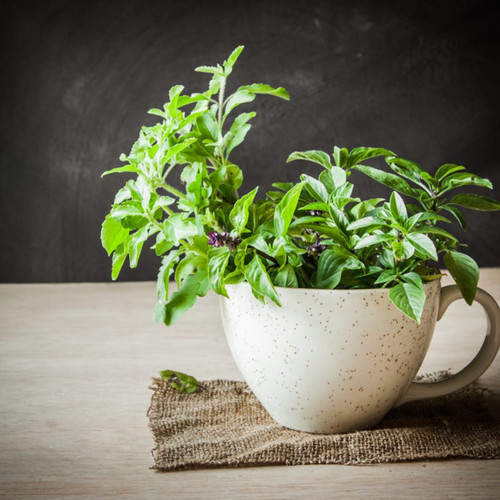Corsican mint is a low-growing mint groundcover native to Corsica, Sardinia, France, and mainland Italy. If you’re looking for a bedding plant to use in landscaping, this low, spreading groundcover is an ideal option. It’s appealing to look at and has a wonderful minty aroma. It can easily handle foot traffic and thrives in shady areas. Corsican mint has bright green leaves that cluster together to give a moss-like appearance. Its small height makes it look like a carpet around your stepping stones. Tiny mauve flowers appear in early summer months from June to August, giving out peppermint aroma to refresh you on a hot day. If you plant this mint groundcover in partial shade with well-draining soil, it will continue to thrive without giving you any trouble. You can grow it in containers and use for culinary purposes or a splash of green, minty indoor décor. Snip some leaves to add to hot and cold drinks and baked items to give them an intense minty flavor. In general don’t require much effort other than taking care of the basic needs like watering and fertilizing. They’re vigorous growers, often spreading like crazy on their own.
Also, the strong peppermint scent of the mint helps keep most pests and insects away.
Corsican mint is not susceptible to any disease. You just have to look out for the roots. They can get damaged due to excess watering and soil with poor drainage.
Growing: Planting season: year round in warm climates; early spring, indoors, 4-6 weeks prior the danger of last frost is gone and later transplant the seedlings when they have two true leaves outdoors. Direct seeding when the danger of last frost is gone and soil is workable.
Soil: diverse soil types, i.e. normal, sandy or clay.
Sowing depth: sprinkle the seeds on the surface of the soil and do not cover, as they need light to germinate.
Spacing: 12-16in (30-40cm).
Light: Grows well in partial shade. While it can tolerate full light, dappled light is preferable.
Watering: moderate. Overwatering can expose the roots to fungal attacks.
Fertilizing: The best time to fertilize is early spring. You can use one teaspoon of water-soluble, slow-release fertilizer. Make sure to water well after fertilizing.
Seeds germinate in about 15 days.
All our seeds are strictly Non-GMO, Untreated, Free of any possible harmful chemical compounds. All come from trusted and carefully selected small, non-commercial farmers worldwide that provide fresh, safe supply.*









